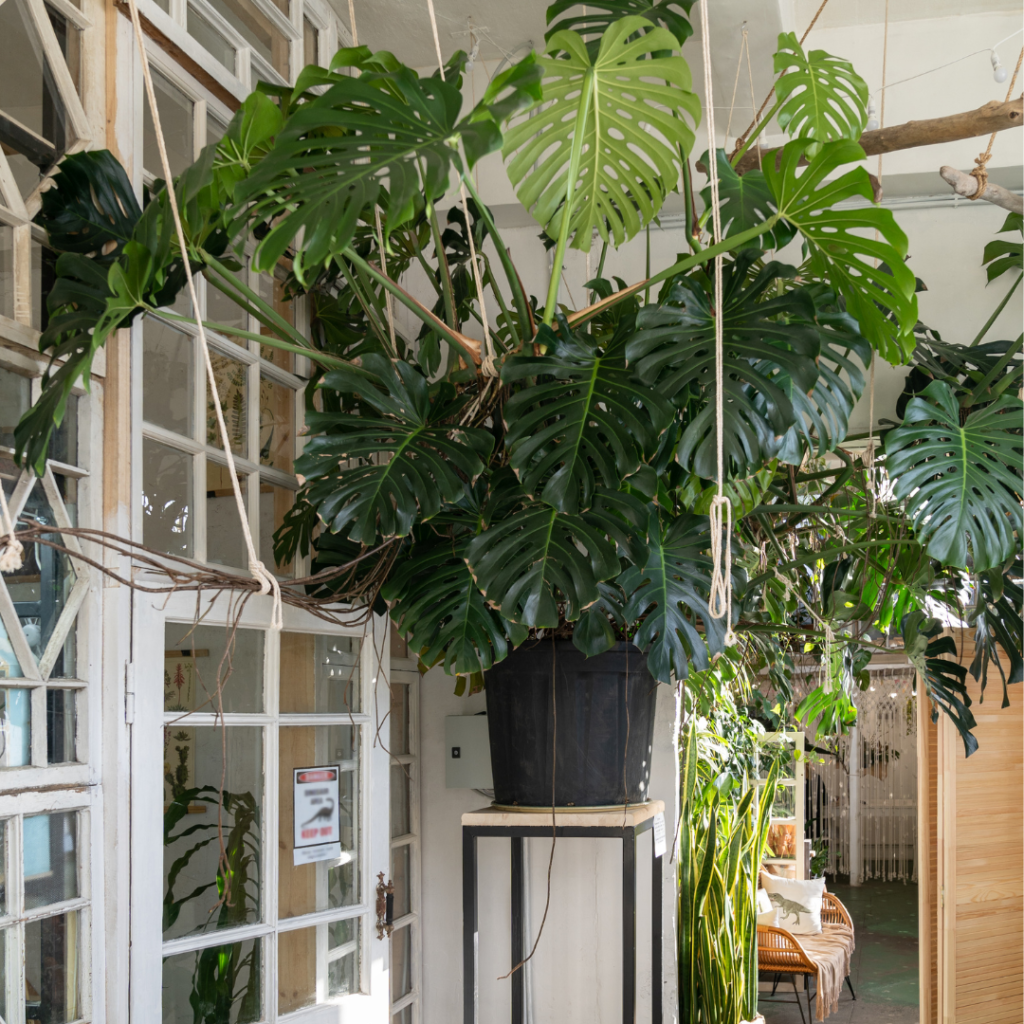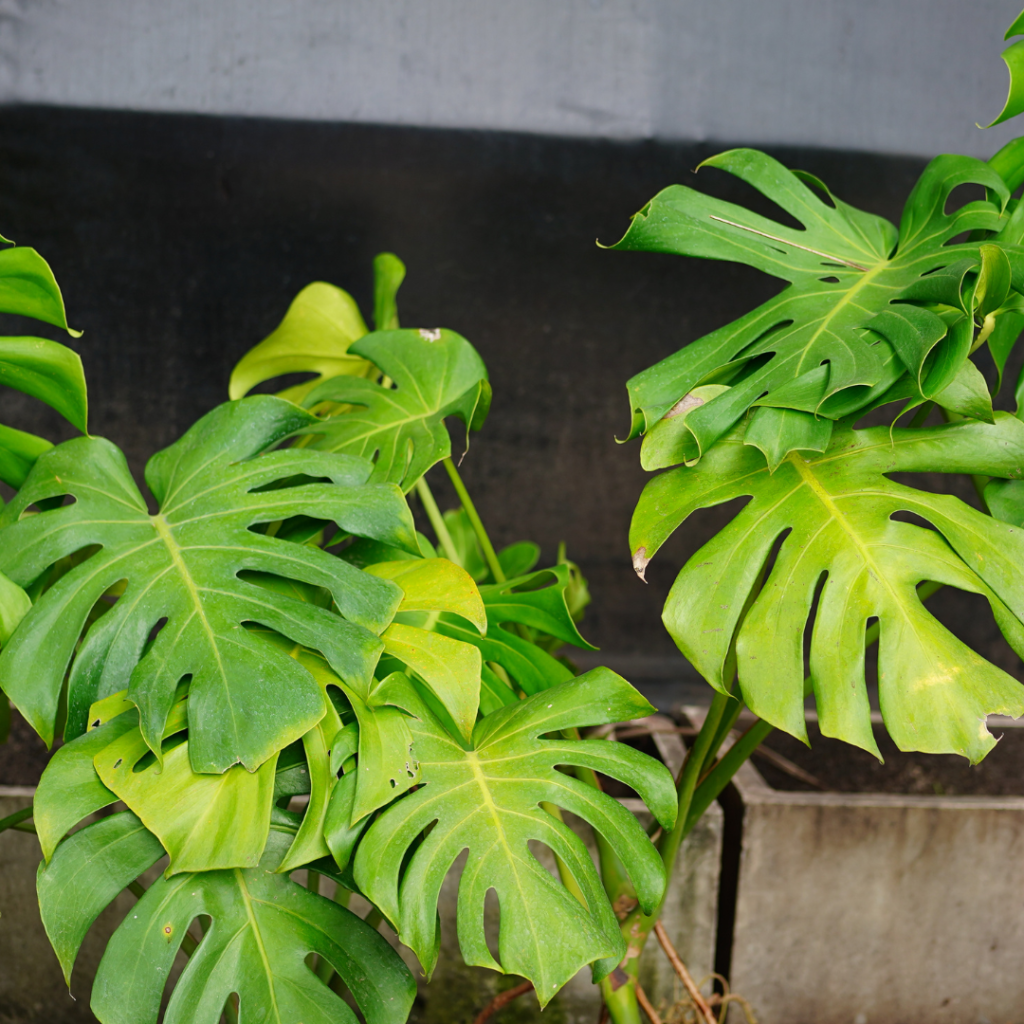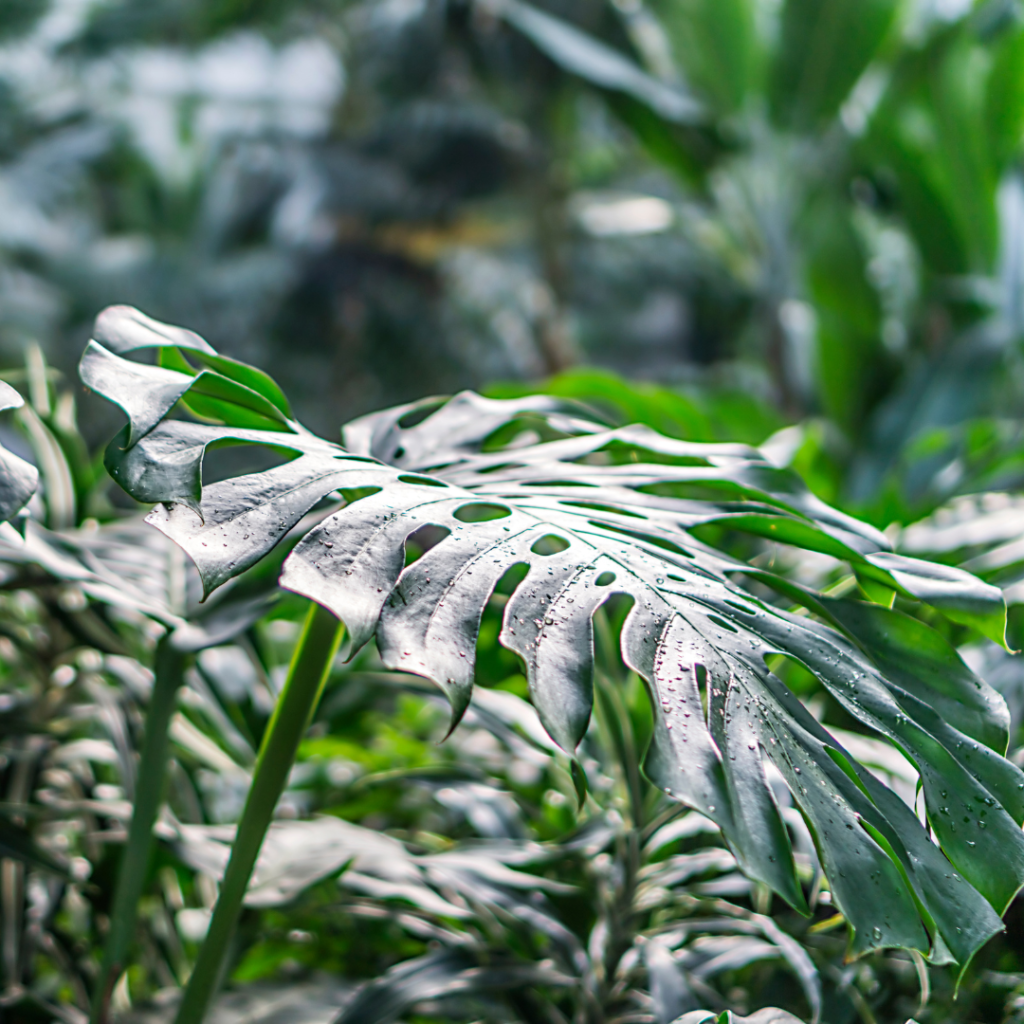The Monstera is a beautiful plant with large, glossy leaves that can grow to be up to two feet long. The leaves of this plant are large and oval-shaped, with smooth edges and pointed tips.
The Monstera has a green and leafy appearance, and it’s native to Mexico. It’s a fast-growing plant that can grow up to 50 feet tall if left unchecked! That being said, it’s recommended that you keep your Monstera indoors or in a greenhouse.
Monstera is a fantastic houseplant that’s incredibly easy to grow, but can you plant it outside?
The good news is that yes, Monstera can be planted outside. The bad news is that it needs a lot of care, so if you’re going to plant your Monstera outside, it’s important to know what you’re getting into.
If you are planning to put your plant outside there are two options for it.
The first one is to plant them directly in your garden the monstera plant which it’s more recommended for those who are living in subtropical climates like Hawaii and South Florida.

If you are living in a colder area and your area are temperatures drop below 50 degrees Fahrenheit planting your monstera out is not recommended. we suggest planting your monstera in a plant pot with good drainage so that when winter season comes you can put your monstera inside your home.

When it comes kinds of varieties that will thrive outdoors there are some varieties or kinds of monstera that can thrive both outdoors and indoors like Monstera deliciosa, Adansonii, and siltepecana.
But to be successful growing outdoors you MUST first ensure you meet the necessary growth conditions.
Here are some of the checklist of the growth and care requirements
Check your USDA Hardiness Zone
- Are you in Zone 10b-12?
Because if you are in the zones 10b-12 you definitely can grow your monstera outdoors because you are in the subtropical climate state. If you are not sure what zone are you in, you can ask your local nursery or click this to see a guide on what are your zone.
Remember that these plants are not frost-hardy and cannot withstand freezing temperatures. Only in the zone, 10b-12 can grow them outside all year.
And if you are not inside America you can definitely plant this outside if you are in tropical, subtropical, and warm temperature zones that don’t experience freezing or winter season.
Soil
- What kind of soil should you use?
Now that you have the plant, you’re probably thinking about what kind of soil to give it. We’re here to tell you what, though!
You’re okay to go if your soils are loamy, well-drained, aerated, and between slightly acidic and neutral in pH. However, if they don’t drain well or feel heavy, add additional gravel or perlite. Compost can also be added.
Sandy, heavy, or compacted soils should be avoided since they may result in root rot.
Temperature and humidity
If you live somewhere where it gets below freezing during the winter, you might want to think about moving your plants inside where they can continue to enjoy their preferred climate.
Tropical plants called monstera are indigenous to Mexico and Central America. It enjoys warm, muggy situations. Although Monstera can grow in a wide range of temperatures (35-80 °F / 1.7-26.6 °C), it likes conditions between 70-80 °F (21-27 °C).
Lighting
The best light for your Monsteras is indirect light. This means that since severe shade may inhibit growth, you should avoid it.
On the other side, why not direct sunlight? because your plant will experience a sunburn, which will cause the leaves to seem faded or washed out and to have brown tips and edges, among other symptoms.

And that’s it! You should verify the growth parameters we just mentioned if you plan to grow your monsteras outside.
We sincerely hope that this was useful but, if you have any queries or more advice, kindly let us know in the comments!
Take a Quiz About Monstera Plant
Click here to start the quiz.

Pingback: Monstera Dubia - Monstera Bliss